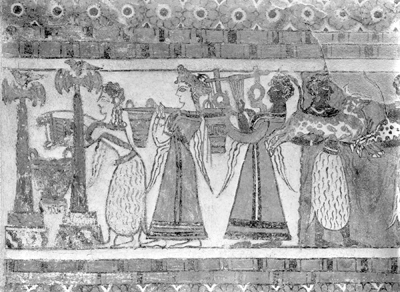July 2005 (109.3)
Article
Materialization of Mycenaean Ideology and the Ayia Triada Sarcophagus
The political geography of Late Bronze Age Crete has been the subject of much recent research. In this article, I argue that the well-known painted sarcophagus from Ayia Triada dates to the earliest period of a Mycenaean presence on Crete and is an artifact connected to an emergent Mycenaean ideology. A contextual analysis of the burial chest is presented by examining it not as an isolated work of Aegean “art” but as an expression of power by sophisticated Mycenaean elites who were asserting political, ideological, and economic dominance by means of cultural hybridity. Similarly, the architecture of LM III Ayia Triada retains Minoan features that forge a strong link with its past. By appropriating images from the Minoan past and combining them with contemporary Mycenaean elements, the creators of the sarcophagus produced a monument that linked the Late Bronze Age present on Crete with a well-crafted view of the Middle Bronze Age past.
